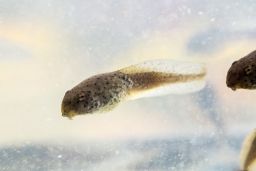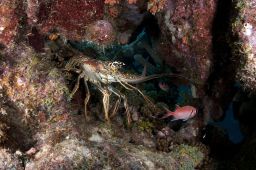Exposed to a sick American bullfrog tadpole, a healthy tadpole will do its best to stay away. Garden ants and even lobsters also know to stay away when one of their own is sick.
These animals are better at social distancing than we are.
For many humans, social distancing feels like the most unnatural thing in the world, but in other parts of the natural world, it’s the norm.
When an infected animal gets too close, other animals have learned to stay away.
To see if animals behaved differently around infected animals in order to protect themselves from getting sick, researchers have been conducting studies over the past couple decades.
Joseph Kiesecker, lead scientist at The Nature Conservancy’s conservation lands team, worked on one of the earlier studies and found that American bullfrog tadpoles were excellent at social distancing.
“It was clear they were using behavior when given the choice to be near an infected individual, they avoided that infected individual,” he said.

Kiesecker placed a tadpole infected with a pathogen around other healthy tadpoles. The tadpoles could smell the chemicals from the sick tadpole. Detecting it was infected, the healthy ones stayed away, according to Kiesecker’s findings.
During part of the study, Kiesecker also tested keeping a healthy tadpole near an infected one.
“When we forced them to stay in close proximity and then observed whether they were infected or not, the probability that they would get infected increased based on the proximity that they were to the infected individual,” Kiesecker said.
Tadpoles aren’t the only animals to physically distance themselves from sick members of their own species.
Garden ants also practice social-distancing behaviors when an infected ant was introduced to a group of healthy ants.
Nathalie Stroeymeyt, a lecturer at the the University of Bristol’s School of Biological Sciences, observed when ants with a fungal disease were introduced to a colony of healthy ants.
After observing the colonies once the infected ants were introduced, Stroeymeyt found that unexposed ants stayed away from the exposed ants and the healthy ants stayed further away from each other as well.
“We believe this is a proactive measure to decrease the risk of epidemic transmission through the colony, not unlike the form of proactive social distancing implemented in our societies to decrease the risk of transmission of Covid-19,” Stroeymeyt said.
Don’t stand so close to me

Lobsters have also showed patterns of disease avoidance, according to Donald Behringer, a professor of marine and disease ecology at the University of Florida. He worked on a study that showed that healthy lobsters know to socially distance themselves from sick lobsters.
“Healthy lobsters are able to detect and avoid diseased lobsters using chemical cues in the urine of the infected lobsters,” Behringer said. “They do not even need to see the infected lobster to know they should avoid it.”
Unlike the ants, the unhealthy lobster did not change its behavior. The sick lobster followed the healthy lobster into a cave and the healthy lobster would be the one to leave, Behringer said. Once the healthy lobster left, the unhealthy lobster followed, and it became a game of “lobster musical chairs” until the sun came up and one lobster claimed the cave for the day.
The lessons learned from these animals aren’t exclusive to their own species.
Epidemiologists use studies like these, Kiesecker said, to have a better understanding of how diseases spread amongst other species – including humans. This allows people to “alter and change their behavior” to decrease the chance of infection, he said.
“Behavior is important,” Kiesecker said.
“Tadpoles can’t watch the news (and) can’t read news articles that tell them this. People can.”




